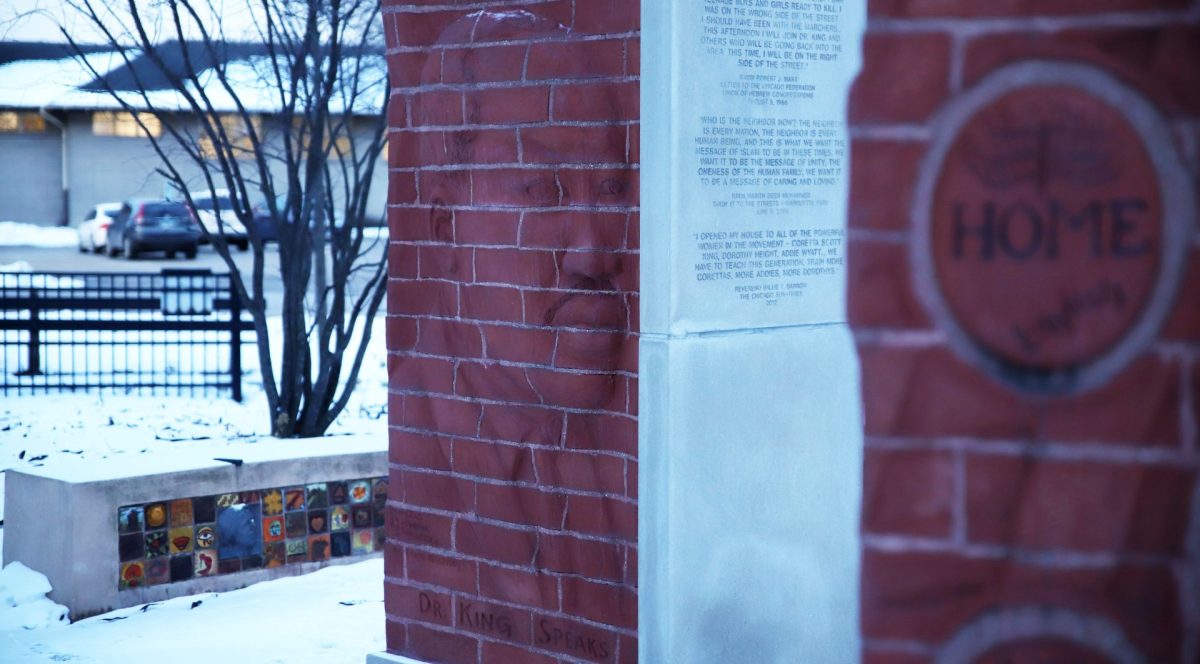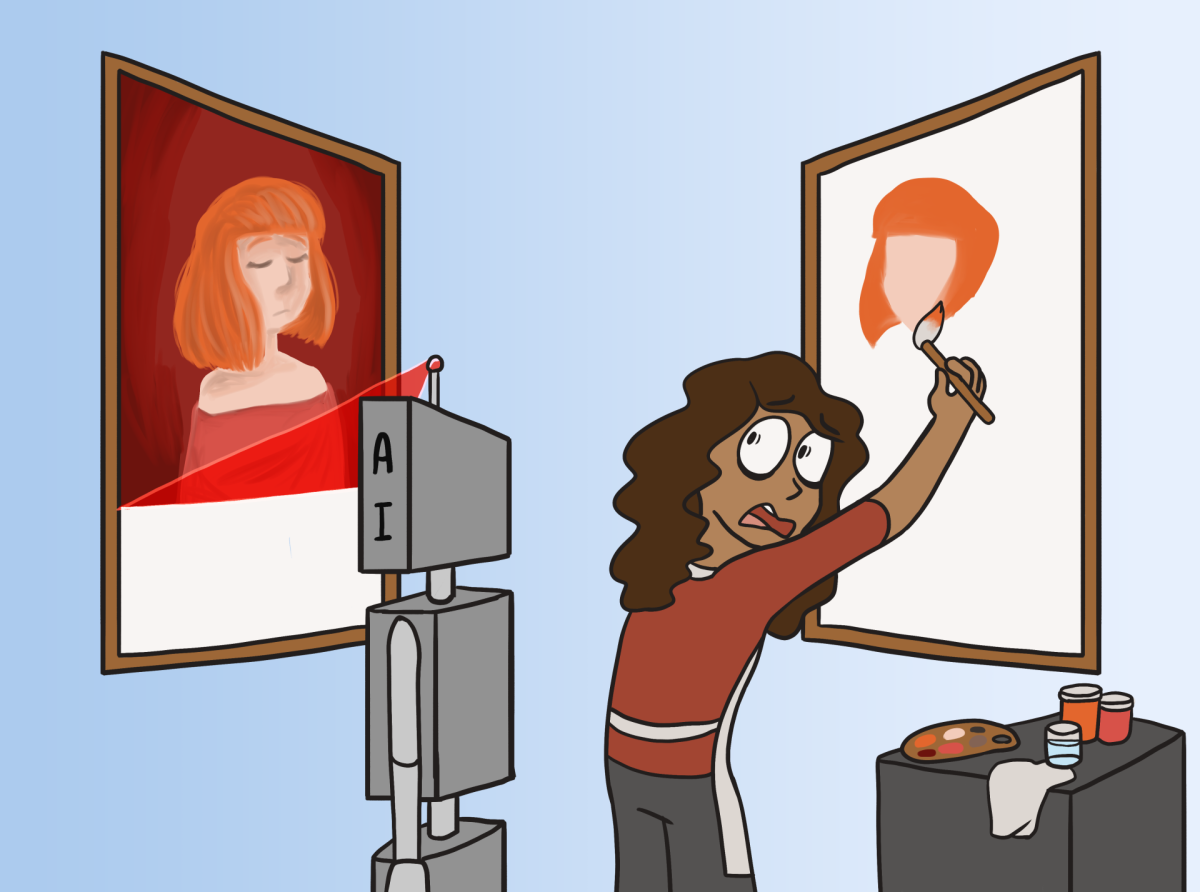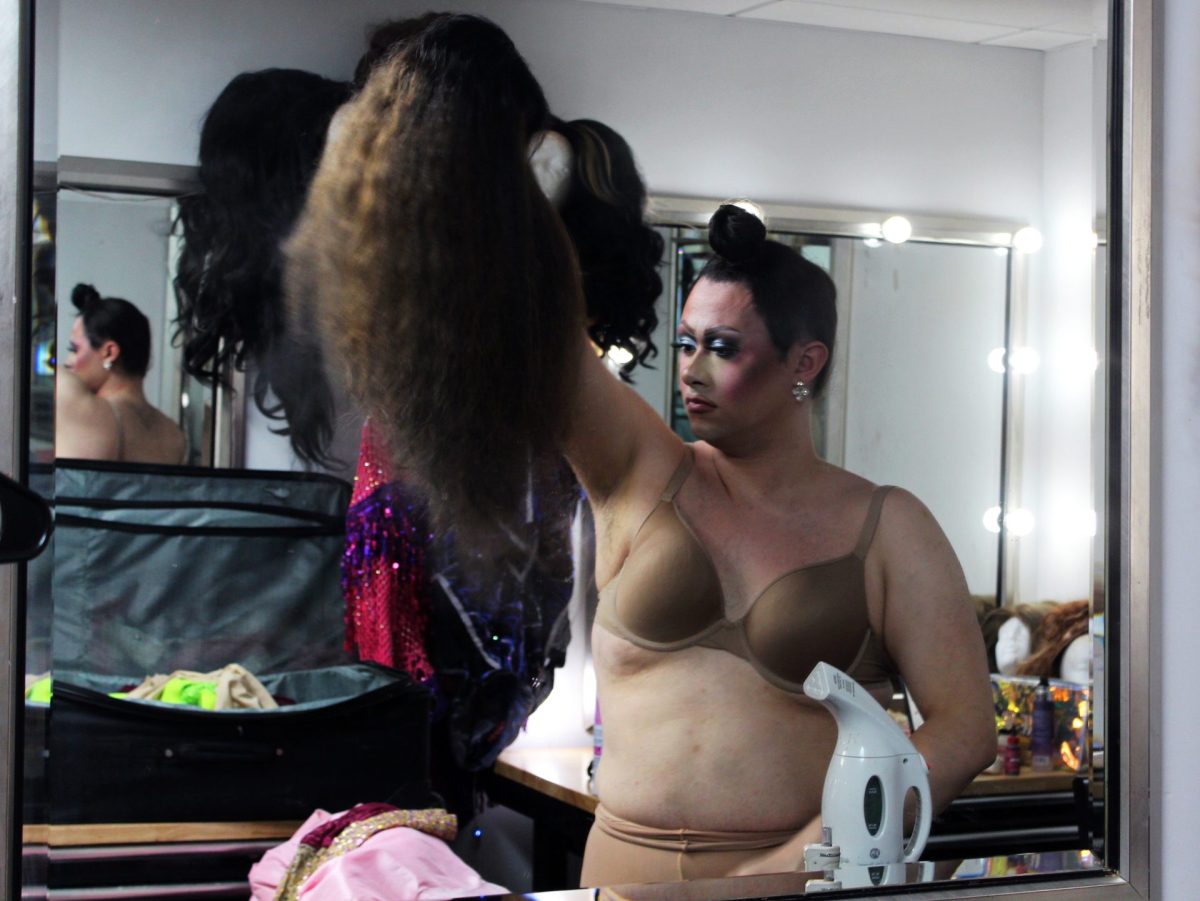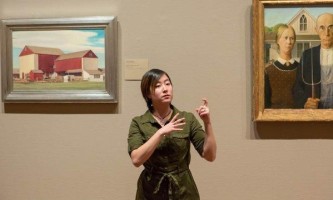
As a small group gathered at the entrance to Gallery 100 at The Art Institute of Chicago this past Thursday for a signed gallery tour of the “Degas: At the Track, On the Stage” exhibit, the atmosphere was anything but quiet. Patrons with and without hearing impairments gathered to experience the prolific works of the impressionist painter and appeared to paint their own conversations, excitedly signing with their friends and family up until the tour began.
“It’s an enthusiastic group of people who are engaged in the collections and exhibitions,” said Lucas Livingston, the assistant director of senior programs in the Department of Museum Education at The Art Institute of Chicago. “We see some recurring attendees and new ones each time, but one of the beautiful things is that we are reaching a diverse age demographic.”
The accessibility department of The Art Institute began monthly signed tours in January of 2015 and has seen attendance between 40 and 60 and is composed of people from all walks of life and abilities. Guests are led through a different exhibit with a signing guide and two speaking guides, and are encouraged to participate in the discussion about the works.
The guests in attendance make up a small portion of a thriving community of people with disabilities in Chicago. According the American Alliance of Museums’ “Museums on Call” 2013 report, people with disabilities represent the largest minority group in the country with upwards of 56 million Americans. As the Baby Boom population grows older, by 2030, the U.S. could see a drastic increase in the number of people with diminished eyesight, hearing, mobility and cognition.
For LeAsia Howard, 25, the tour has ignited a discovery for art appreciation. Howard, a Chicago native and first-time sign language galley talk attendee, has a hearing impairment and enjoys the delicate works of Edgar Degas.
“I enjoy looking at art and beautiful pictures,” Howard said. “(Degas) truly knew art. The history behind (Degas’) art that I now know has been inspirational and helped me appreciate the art more deeply.”
The tours are offered first in sign language and then made accessible to a hearing audience so patrons with hearing impairments may bring friends and family who may not otherwise be comfortable with sign language, said Livingston. “It creates an inclusive environment.”
It’s hard to imagine that with nearly 850 millions visits each year to American museums, accessibility programs in major fine arts museums have only really become prominent in the last decade.
Efforts to make collections more accessible for people with disabilities began with the Rehabilitation Act of 1973, which prohibited recipients of federal funding from discriminating against people with disabilities in their hiring and contracting practices, facilities and programs. Cultural institutions that were receiving federal funding, such as National Endowment for the Arts, among countless other museums and institutions, had to begin looking at how they welcomed visitors with disabilities.
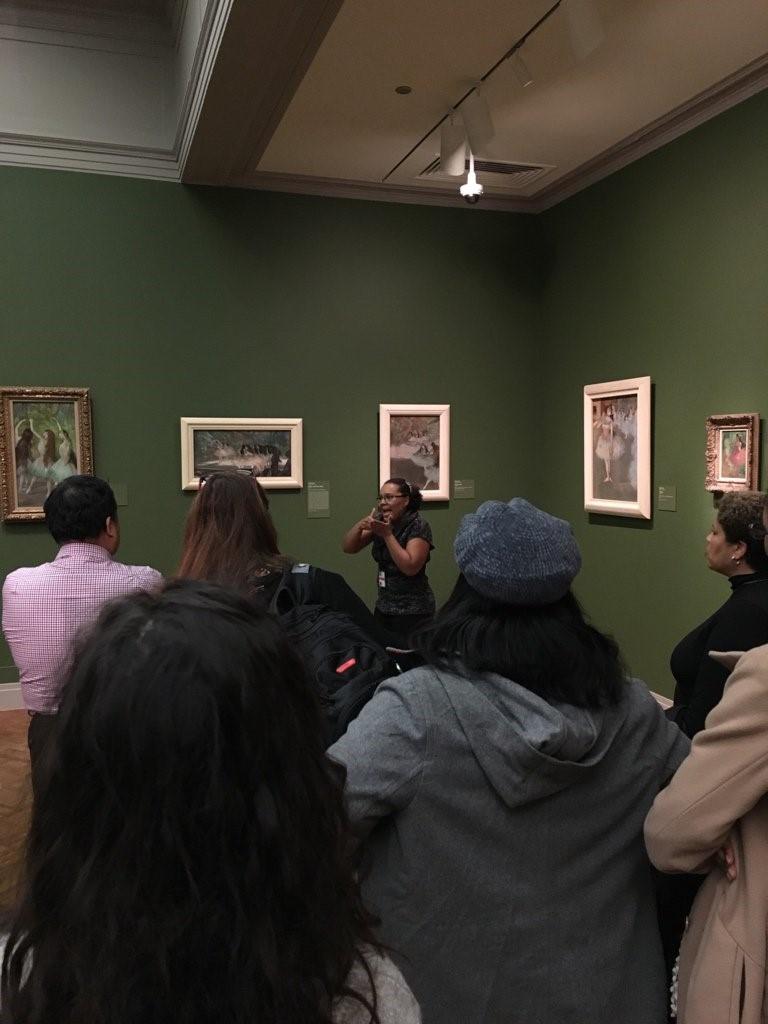
Marca Bristo understands how many obstacles one can face with disability. Bristo, the chair of the National Council on Disability and the president of Access Living Chicago, was 23 years old and living out her dreams when she plunged into Lake Michigan in an auto accident in 1977. The event broke her neck and she was left paralyzed from the waist down.
“I lost my home, my health insurance, my means of getting around the city,” she said in an interview with the Chicago Tribune. The world in 1977 was not accessible to people with disabilities, but Bristo has worked for the last 30 years to level the playing field.
In 1990, the United States government passed the Americans with Disabilities Act of 1990 (ADA). The federal civil rights law prohibits exclusion of people with disabilities from everyday activities, including leisure in the private and public sectors and fixed loopholes in the Rehabilitation Act.
“(Since) I broke my neck in 1977, the world has changed enormously. But there’s still a lot to do,” Bristo said. “The law gave us the legal tool and protections that we hadn’t had previously.”
The ADA celebrated its 25th anniversary on July 26. Bristo noted that in these last 25 years, drastic improvements have been made including “the ones I thought would be the hardest, that cost a lot of money like infrastructure and transportation accessibility,” but that the more stubborn changes, such as employment rates, have seen little to no change.
“The next effort is going to be to raise the awareness of the importance of having people with disabilities in all facets of American society,” Steve Pemberton, the Co-Chair of the ADA 25for25 Cultural Access Project, said. “Having a disability is truly part of the human experience, but there are also skills, perspective and differences that people with disabilities bring that actually make us stronger, better.”
The focus for advocacy shifts when considering the increasing rate of Americans with disabilities. According to the 2013 American Community Survey, there are 3.6 million veterans with service-related disabilities, and more people with disabilities are living independently in communities, increasing the potential audience of museum visitors.
“Chicago is a leader in the field of disability. Awareness has been higher in Chicago than in many other parts of the country, specifically with regard to cultural institutions,” Laurel VanHorn, the Director of Programs at Open Doors Organization, a nonprofit group in Chicago servicing disabled people, said. “We started with physical access, and now with technology and apps, people who are blind or deaf are beginning to benefit.”
With technologies like 3-D printing to replicate sculptural work at The Art Institute, handheld captioning devices at Disney, A Feeling for Form at the Boston Museum of Fine Art, Signed Tours at the MoMA in New York, and even robotic exploration of exhibitions at the San Diego Museum of Art, The Detroit Institute of Arts and The Seattle Art Museum, people with disabilities are experiencing the fine arts in ways unimaginable even a decade ago.
“Art can be transformative and that should be for everybody,” VanHorn said. “It’s the small things, like taking works that can’t be touched, and making replicas for visitors with vision impairments to experience them,” that make accessibility programs just like the signed tours at The Art Institute of Chicago so important.
Local museums are taking a cue as well. As one of the few art museums in Chicago that is always free to the public, The DePaul Art museum hopes to one day add an education position to its staff to further explore accessibility programming according to Laura Fatemi, the Associate Director of the DePaul Art Museum.
Erica McDowell, 26, is a religious educator for sign language volunteers and works with a Jehovah’s Witness congregation on S. Michigan Ave. and E. 124 Pl. in Chicago. The congregation works with members of the community and of the faith who live with disabilities. McDowell, also having experienced her first sign language gallery talk at The Art Institute of Chicago, appreciated that the tour was both signed and voice-interpreted.
“It gave me a deeper understanding of the arts. When it’s signed, you can connect the experiences and struggles of the artist to the difficulties communicating the details of the art,” she said. “Events like this are important because it allows us to meet other (people with disabilities) in our community.”
Degas floated invisibly through the art world until he made a place for himself and his fellow Impressionists. Similarly, the attendees of events across the nation just like the signed tour at The Art Institute on Thursday have lived through a world that was not ready to include them. But for artists with disabilities like Oscar Barrientos, an 18-year-old painter and multi-media artist from Chicago, accessibility programming has allowed for a reimagined approach to method and craft.
“It’s more clear and I can visualize the way the artist made the piece much easier,” he said. “It’s truly inspiring and helps me be a better artist.”





